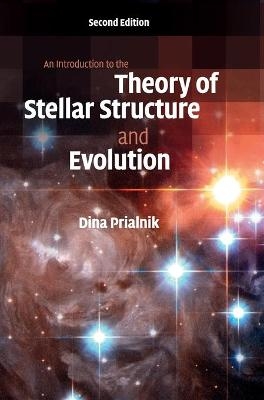
An Introduction to the Theory of Stellar Structure and Evolution
Seiten
2009
|
2nd Revised edition
Cambridge University Press (Verlag)
978-0-521-86604-0 (ISBN)
Cambridge University Press (Verlag)
978-0-521-86604-0 (ISBN)
A stimulating introduction for undergraduates in astronomy, physics and applied mathematics, this second edition contains two new chapters and several new exercises. Clear and methodical, it explains processes in simple terms, while maintaining mathematical rigour, and leads students step-by-step to a global, comprehensive understanding of the subject.
Using fundamental physics, the theory of stellar structure and evolution can predict how stars are born, how their complex internal structure changes, what nuclear fuel they burn, and their ultimate fate. This textbook is a stimulating introduction for undergraduates in astronomy, physics and applied mathematics, taking a course on the physics of stars. It uniquely emphasises the basic physical principles governing stellar structure and evolution. This second edition contains two new chapters on mass loss from stars and interacting binary stars, and new exercises. Clear and methodical, it explains the processes in simple terms, while maintaining mathematical rigour. Starting from general principles, this textbook leads students step-by-step to a global, comprehensive understanding of the subject. Fifty exercises and full solutions allow students to test their understanding. No prior knowledge of astronomy is required, and only a basic background in physics and mathematics is necessary.
Using fundamental physics, the theory of stellar structure and evolution can predict how stars are born, how their complex internal structure changes, what nuclear fuel they burn, and their ultimate fate. This textbook is a stimulating introduction for undergraduates in astronomy, physics and applied mathematics, taking a course on the physics of stars. It uniquely emphasises the basic physical principles governing stellar structure and evolution. This second edition contains two new chapters on mass loss from stars and interacting binary stars, and new exercises. Clear and methodical, it explains the processes in simple terms, while maintaining mathematical rigour. Starting from general principles, this textbook leads students step-by-step to a global, comprehensive understanding of the subject. Fifty exercises and full solutions allow students to test their understanding. No prior knowledge of astronomy is required, and only a basic background in physics and mathematics is necessary.
Dina Prialnik is a Professor of Planetary Physics at Tel Aviv University. Her research interests lie in stellar evolution; the structure and evolution of cataclysmic variables, comet nuclei and other small Solar System bodies; and the evolution of planets.
1. Observations and assumptions; 2. Equations of stellar evolution; 3. Physics of gas and radiation; 4. Nuclear processes; 5. Equilibrium - simple models; 6. Stability of stars; 7. Evolution of stars - schematic picture; 8. Mass loss from stars; 9. The evolution of stars - a detailed picture; 10. Exotic stars: supernovae, pulsars, black holes; 11. Interacting binary stars; 12. The stellar life cycle; Appendixes; References; Index.
| Erscheint lt. Verlag | 29.10.2009 |
|---|---|
| Zusatzinfo | Worked examples or Exercises; 23 Halftones, unspecified |
| Verlagsort | Cambridge |
| Sprache | englisch |
| Maße | 180 x 254 mm |
| Gewicht | 810 g |
| Themenwelt | Naturwissenschaften ► Physik / Astronomie ► Astronomie / Astrophysik |
| ISBN-10 | 0-521-86604-9 / 0521866049 |
| ISBN-13 | 978-0-521-86604-0 / 9780521866040 |
| Zustand | Neuware |
| Haben Sie eine Frage zum Produkt? |
Mehr entdecken
aus dem Bereich
aus dem Bereich
Buch | Hardcover (2012)
Westermann Schulbuchverlag
CHF 44,90
Schulbuch Klassen 7/8 (G9)
Buch | Hardcover (2015)
Klett (Verlag)
CHF 29,90
Buch | Softcover (2004)
Cornelsen Verlag
CHF 23,90


